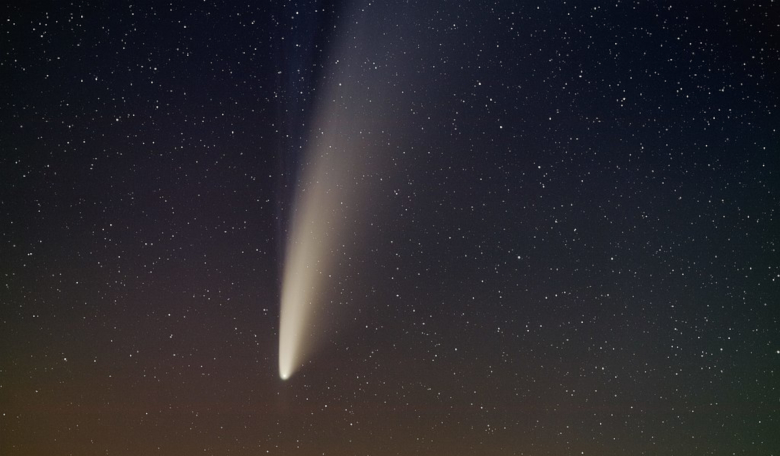Skygazers across the Northern Hemisphere are being treated to stunning views of Comet C/2020 F3, also known as comet Neowise, as it streaks past Earth this month.
Discovered on 27 March by the Near Earth Object Wide-field Infrared Survey Explorer space telescope (NEOWISE), the dazzling comet has developed a spectacular twin tail making it visible to the naked eye without the need for a telescope or binoculars.
Its bright, broad and fuzzy lower tail is thought to be made up of dust particles that have been ejected from the main body of the comet as it is warmed by the sun.
The upper more translucent tail on the other hand is composed of ions - gases that have had electrons stripped out of their constituent atoms and molecules by the Sun’s intense light.
At the moment, the comet is visible from mid-northern latitudes in the evening sky through until dawn and it should be relatively easy to find due to its proximity to the bright star Capella and the stars of the Big Dipper.
The farther north you are, the more opportunities you will have to see the comet streaking through the skies.
Neowise will make its closest approach to Earth on the evening of 23 July, when it will be passing us at a distance of 0.69 AU (103 million km). In terms of passing comets that is close but is still around 400 times further away than our moon is.
After this date, the comet will start to move away and will not to return for another 6800 years as it continues on its journey through the Solar System.
While the comet is set to be a presence in our night skies until the end of the month, and will be visible around the world until mid-August, many astronomers are predicting that now is the best time to try and see it as it will be at its brightest.
If you have some burning questions about Neowise, NASA is hosting a teleconference whereby the public and media can pose their comet conundrums to a panel of experts from NASA, JPL, and the NEOWISE mission.
The NASA Science Live episode will air live at 15:00 EDT (19:00 GMT) Wednesday on NASA Television and the agency's website and viewers can submit questions on Twitter using the hashtag #AskNASA or by leaving a comment in the chat section of Facebook, Periscope, or YouTube.











